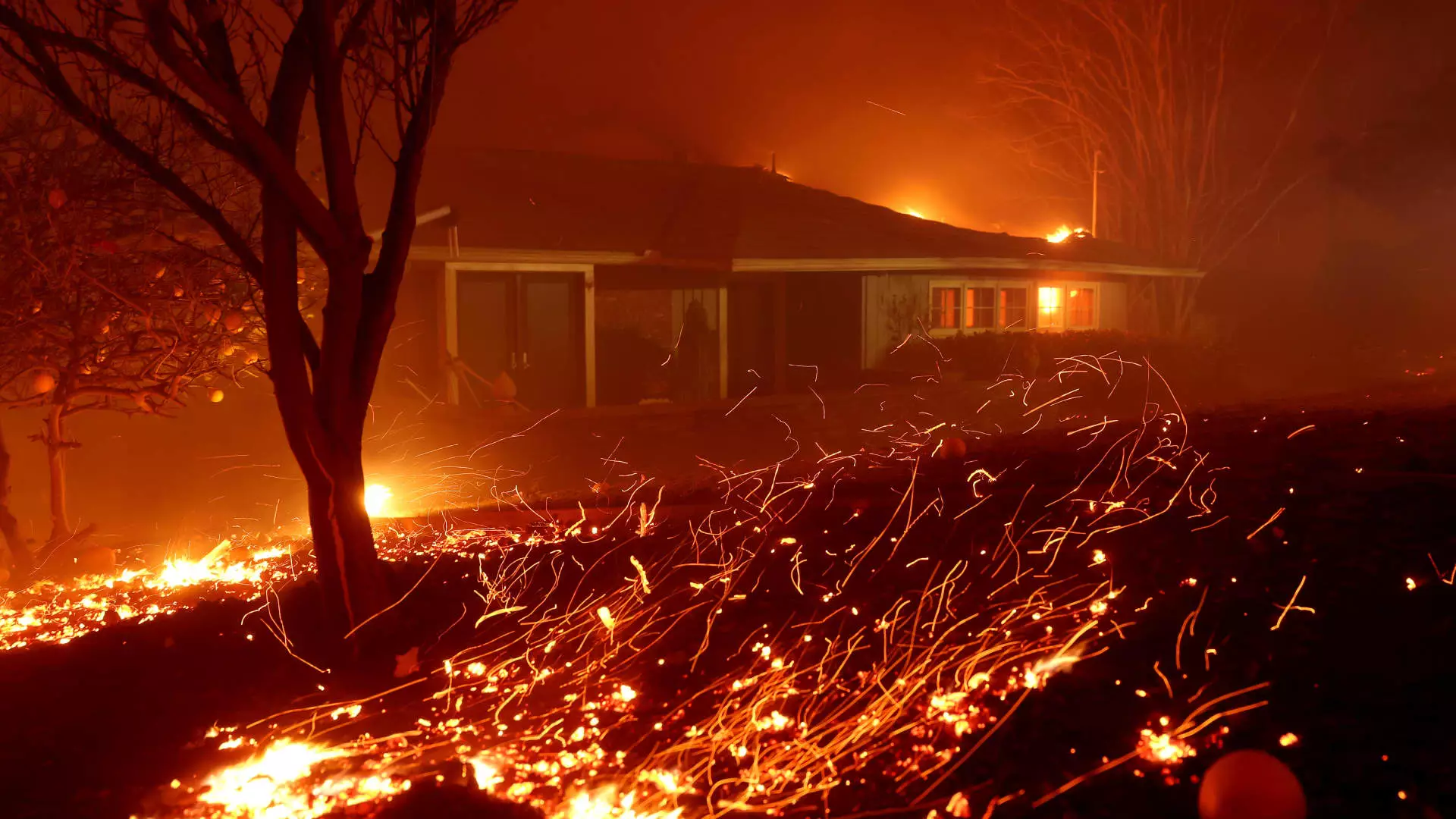The escalating frequency and severity of climate-related disasters are becoming an undeniable force in reshaping the real estate landscape across the United States. While the devastation caused by wildfires in Los Angeles serves as a stark reminder of this reality, it is merely a symptom of a larger issue that threatens the very foundation of the housing market. Recent analyses stemming from climate risk assessments provide a troubling outlook: by the year 2055, an estimated 84% of all homes in the U.S. could experience a decline in value, totaling a staggering loss of $1.47 trillion.
Experts in climate risk modeling assert that these losses are not surprising; rather, they are stark realities that investors and homeowners must reckon with. The head of climate implications research at First Street emphasizes that climate change is no longer a theoretical consideration but a substantial and measurable force. As weather patterns grow increasingly unpredictable, the implications for real estate values extend far beyond local markets, driving a national phenomenon that will affect homeowners and buyers alike.
One of the most immediate ramifications of climate change on real estate is the sharp rise in insurance costs. Predictions indicate that average insurance premiums across the nation could surge by as much as 25% over the next three decades. This increase is driven by two primary factors: ongoing underestimation of current climate risks and the anticipated escalation of those risks. While the projected average decline in property values stands at around 3%, certain regions, particularly in Texas, Florida, and Louisiana, could face drastically steeper losses—some areas projected to see home values slashed by upwards of 50%.
Investment firms such as DeltaTerra Capital are already forecasting significant devaluation trends in the real estate market. Their analysis suggests that within the next five years, up to 20% of U.S. homes will be negatively impacted by climate change, with values potentially plummeting by 30%. Such predictions lead to a chilling realization that the current real estate system may face vulnerabilities reminiscent of the subprime mortgage crisis of the late 2000s.
The ticking time bomb of climate risk is further exacerbated by the mounting pressures on the mortgage market. Institutions like Fannie Mae have begun to take notice, striving to incorporate climate risk into their underwriting processes. However, the transition is slow, and there remains a significant gap between actual climate-related risks and how they are accounted for in home valuations and financing strategies.
Ben Keys, an academic in real estate and finance, warned that the swift acceleration of climate-related disaster risks could lead to a profound imbalance in the market. As foreclosures rise—historical data suggests that they can spike dramatically following major climate events—this imbalance may further destabilize an already fragile housing market, leading to a situation in which asset values cannot achieve equilibrium, forcing a downturn.
As if rising insurance premiums were not alarming enough, some communities struggling to manage their exposure to climate risk may resort to increasing local taxes to fund necessary resilience measures. These changes can substantially affect the cost of living for residents and may inhibit economic growth. Furthermore, homeowners will face heightened maintenance costs and energy expenses as they adapt to new climate realities.
Legislative responses to climate change have also been unevenly applied. Policy decisions, such as those made under previous administrations—including attempts to cut regulations intended to bolster flood risk management—illustrate the complications inherent in addressing the multifaceted challenges posed by climate change.
The dichotomy between awareness of climate risks and tangible actions to mitigate those risks remains one of the most pressing challenges facing today’s real estate markets. With the stakes higher than ever, it is crucial for investors, homeowners, and policymakers to understand that climate change will fundamentally alter the landscape of property values and the insurance products that underpin them.
As experts strive to outline intelligent strategies for managing these risks, it is evident that adaptation is critical. By integrating climate resilience into financial decision-making, individuals and communities can better prepare for the inevitable changes that lie ahead. Ultimately, the survival of real estate markets in the wake of climate change depends on our collective ability to recognize and act upon the seat of these challenges before it is too late.

